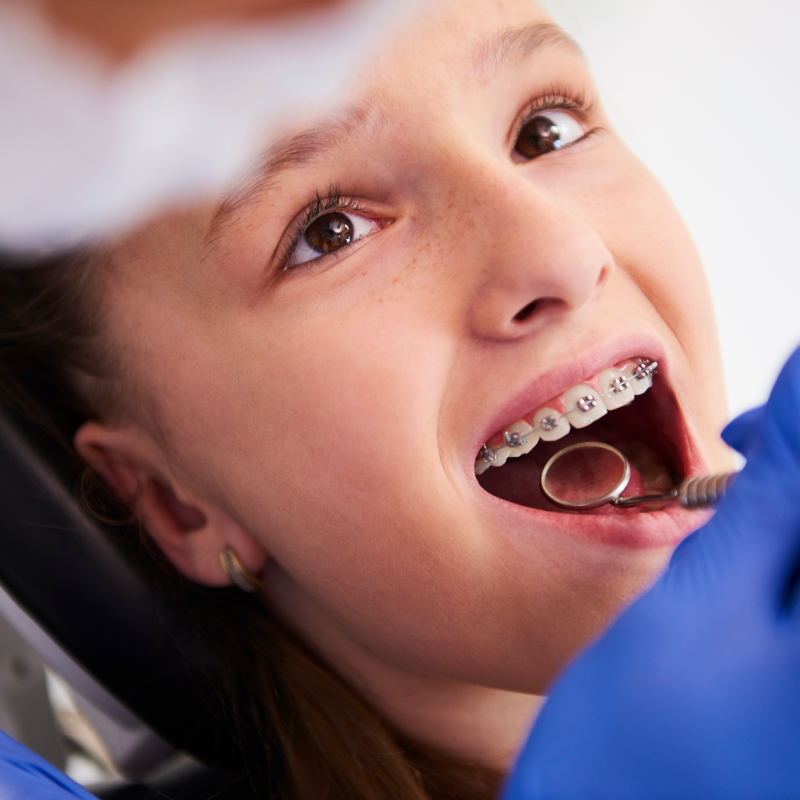
Dental braces are a widely used orthodontic treatment designed to correct misaligned teeth, bite issues, and jaw irregularities, improving both oral health and aesthetics. They work by applying continuous pressure to gradually shift teeth into proper alignment. Whether you're an adult seeking a straighter smile or a parent considering braces for your child, exploring different types of braces can help determine the best option.
What Are Dental Braces?
Dental braces are devices used by orthodontists to straighten teeth, correct bite issues, and improve overall oral health. They apply gentle, continuous pressure to move teeth into their ideal positions over time.
Who Needs Braces?
Braces are recommended for individuals with:
- Crooked or misaligned teeth
- Overbite or underbite
- Gaps between teeth
- Crowded teeth
- Jaw misalignment
Different Types of Dental Braces
There are several types of braces available, depending on the patient’s needs and preferences:
1. Metal Braces
- Traditional braces are made of stainless steel.
- Most effective for severe misalignments.
- Affordable and durable.
2. Ceramic Braces
- Similar to metal braces but with tooth-colored brackets.
- Less noticeable than metal braces.
- Slightly more expensive than metal braces.
3. Lingual Braces
- Placed behind the teeth, making them invisible.
- Customized for each patient.
- Can be uncomfortable and challenging to clean.
4. Clear Aligners (Invisalign)
- Transparent, removable trays that gradually shift teeth.
- Ideal for mild to moderate misalignments.
- Comfortable and convenient but may require discipline in wearing them.
Dental Implants and Braces
Some individuals may require both dental implants and braces for a complete smile makeover. Here’s how they work together:
- Braces Before Implants: If a patient needs braces and dental implants, braces are usually placed first to align the teeth before implants are installed. Since implants are fixed, they do not move like natural teeth.
- Braces After Implants: In some cases, braces may be adjusted around existing dental implants if they are already in place.
- Combination Treatment: Orthodontists work closely with implant specialists to ensure the best alignment and bite correction for the patient.
The Braces Treatment Process
Orthodontic treatment involves multiple stages to achieve perfectly aligned teeth.
- Consultation and Evaluation: During the first visit, the orthodontist thoroughly examines the patient's teeth, takes X-rays, and discusses the treatment plan. This step helps determine the severity of misalignment and the best type of braces for the patient.
- Placing the Braces: Brackets are carefully bonded to the teeth using dental adhesive, and wires are threaded through them to apply controlled pressure. This step marks the beginning of the alignment process.
- Regular Adjustments: Monthly check-ups are crucial to track progress and make necessary adjustments. The orthodontist tightens the wires or changes bands to continue the teeth-moving process effectively.
- Completion and Retainers: Once the desired alignment is achieved, the braces are removed. Retainers are then prescribed to maintain the new position of teeth and prevent them from shifting back.
Benefits of Dental Braces
Braces offer multiple advantages beyond just improving the appearance of a smile.
- Improved Oral Health: Misaligned teeth are harder to clean, increasing the risk of cavities and gum disease. Braces help align teeth properly, making daily brushing and flossing more effective.
- Better Aesthetic Appeal: A well-aligned smile enhances facial appearance and boosts self-confidence, making social interactions more comfortable.
- Corrected Bite Issues: Braces help fix bite problems such as overbite, underbite, and crossbite. This prevents long-term issues like jaw pain, excessive tooth wear, and difficulty in chewing.
- Speech Improvement: Misaligned teeth can sometimes cause speech difficulties. Braces help correct such issues, leading to clearer pronunciation and better verbal communication.
Care and Maintenance of Braces
To ensure effective treatment and avoid complications, proper care of braces is essential.
- Maintain Good Oral Hygiene: Brushing and flossing daily are crucial to prevent plaque buildup around brackets and wires. Using a soft-bristle toothbrush and an interdental brush helps clean hard-to-reach areas.
- Avoid Certain Foods: Hard, sticky, and chewy foods can damage braces, leading to delays in treatment. Avoid foods like caramel, popcorn, and chewing gum.
- Attend Regular Orthodontic Check-Ups: Routine visits to the orthodontist ensure progress tracking, adjustments, and immediate resolution of any issues.
- Wear Retainers After Treatment: Retainers help keep teeth in their new position after braces are removed. Wearing them as advised by the orthodontist prevents relapse and maintains alignment.
Conclusion
Dental braces are a highly effective treatment for achieving a beautiful and healthy smile. Whether opting for traditional metal braces or clear aligners, consulting an orthodontist can help you determine the best option for your dental needs. If you require dental implants along with braces, your dentist will create a customized treatment plan to ensure the best possible results.
If you’re considering braces, take the first step towards a confident smile by scheduling a consultation with an experienced orthodontist today!
FAQs
1. At what age should one get braces?
Braces can be worn at any age, but the ideal time is between 10-14 years when the jaw is still growing.
2. Do braces hurt?
There may be mild discomfort initially and after adjustments, but it subsides within a few days.
3. How long does the treatment take?
Treatment duration varies, typically ranging from 12 months to 3 years.
4. Can I eat normally with braces?
Yes, but avoid hard, sticky, and crunchy foods that may damage braces.
5. Are clear aligners as effective as braces?
Clear aligners work well for mild to moderate misalignments but may not be suitable for severe cases.

